Sansi LED: Sustainable LED Lighting and Integrated LED Display
Delivering premium and professional LED Display, LED Lighting, Smart City Integration solutions, trusted by over 60,000 companies worldwide everyday. From industrial lighting to commercial lighting, from outdoor advertising to XR & VR production, Sansi LED greatly improves the quality and sustainability of your business with 30 years of expert experiences.
A Complete Guide to Beam Angle in Industrial Lighting
When selecting LED high bay lights for your facility, one of the most important factors to consider is the beam angle. The beam angle refers to the spread of light emitted from the fixture, and it significantly affects how effectively the light illuminates the space. Different application environments have varying lighting requirements, and the beam angle plays a crucial role in achieving optimal lighting. Here’s a guide on how to choose the right beam angle for your LED high bay lights based on specific application needs.
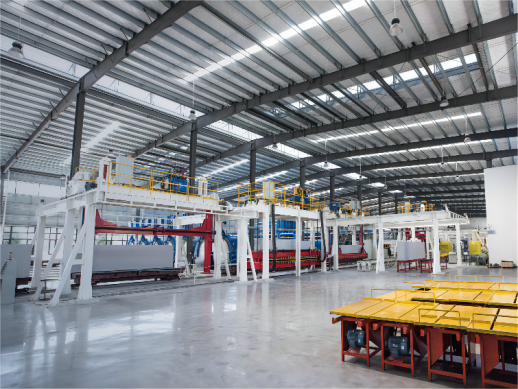
1. Warehouses and Logistics Centers: Narrow Beam Angles for Focused Lighting
In large warehouses or logistics centers with high ceilings and vertical shelving, narrow beam angles (such as 30°-60°) are highly beneficial. These environments require concentrated light on the floor or shelves rather than wasting light in empty areas.
l Why is this important?
• Narrow beam angles direct light precisely onto shelves or the floor, effectively preventing light dispersion.
• Reduces light pollution, improves light efficiency, and lowers overall energy consumption.
l Ideal applications:
• High-shelving warehouses
• Vertical storage logistics centers
• Manufacturing stations
2. Sports Venues and Arenas: Wide Beam Angles for Even Coverage
Large spaces such as sports stadiums, arenas, or industrial workshops require wide beam angles (typically 120° or more) to ensure uniform lighting, eliminate shadows, and enhance overall visibility.
l Why is this important?
• Wide beam angles cover larger areas, reducing the number of lights needed and cutting wiring and maintenance costs.
• Even light distribution in sports venues improves the viewing experience and ensures athletes have clear visibility from any angle.
l Ideal applications:
• Sports fields and multi-functional arenas
• Gyms
• Large industrial workshops and open warehouses
• Open workshops with large equipment or machinery
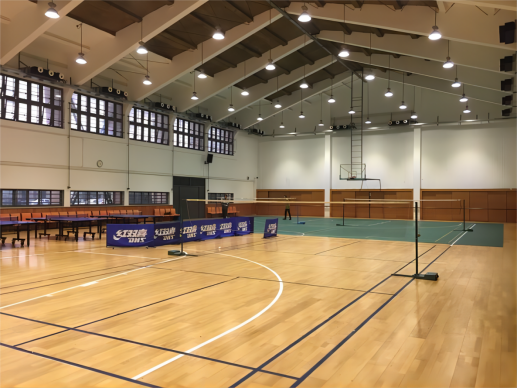
3. Retail and Commercial Spaces: Adjustable Beam Angles for Flexibility
In retail stores, exhibition halls, or shopping malls, lighting must accommodate both product displays and customer comfort. LED high bay lights with adjustable beam angles offer flexibility to suit various display needs.
l Why is this important?
• Adjustable beam angles allow lights to focus on key areas while also providing diffuse light to general areas.
• Enhances the shopping experience and optimizes product display lighting.
l Ideal applications:
• Retail stores and shopping centers
• Exhibition halls or museums
• Restaurants or cafés
4. Gas Stations and Outdoor Parking Lots: Wide Beam Angles Combined with High Protection
Gas stations and outdoor parking lots require high brightness, uniformity, and safety. It is recommended to use lights with a 90°-120° beam angle, along with IP66 or higher protection ratings to withstand harsh weather conditions and dust.
l Why is this important?
• Wide beam angles provide even ground illumination, reducing dark spots and enhancing safety for vehicles and pedestrians.
• In outdoor environments, high protection ratings extend the lifespan of the lights and reduce maintenance costs.
l Ideal applications:
• Gas stations
• Outdoor parking lots
• Logistics unloading areas
5. High-Precision Workplaces: Narrow Beam Angles and High Brightness
For spaces like laboratories or precision machining workshops where specific task lighting is needed, narrow beam angles (30°-45°) combined with high brightness are essential. These lights provide focused light for precise tasks.
l Why is this important?
• Narrow beam angles concentrate light on work areas, improving precision and reducing eye strain.
• High Color Rendering Index (CRI) lights further enhance color accuracy, aiding in high-precision tasks.
l Ideal applications:
• Electronics assembly lines
• Laboratories or testing facilities
• Precision manufacturing plants
6. How to Choose the Right Beam Angle
Consider the following factors when selecting the right beam angle:
• Ceiling Height: The higher the ceiling, the narrower the beam angle should be to focus light on the required areas. For example, at a height of 12-16 feet (3.6-4.8 meters), choose a 120° beam angle, while for ceilings above 25 feet (7.5 meters), opt for 60° or narrower angles.
• Space Layout: Narrow beam angles are suited for vertical shelving warehouses, while wide beam angles are ideal for open venues or workshops.
• Light Uniformity: Even lighting is crucial for safety and comfort. Avoid creating dark spots or harsh glares.
• Protection Rating Requirements: For outdoor settings, choose lights with an IP65 or higher rating to ensure durability.
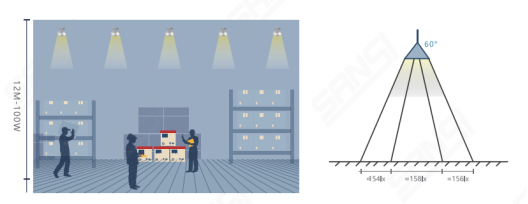
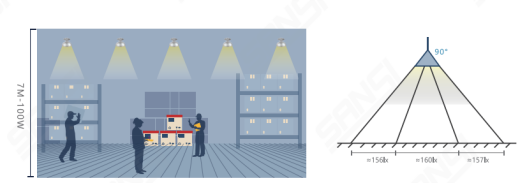
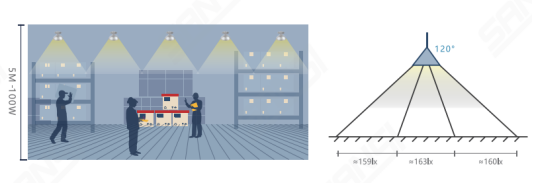
The beam angle of LED high bay lights is crucial to their performance. Whether it’s focused lighting for high-shelving warehouses or wide coverage for stadiums, each application has its specific beam angle needs. By understanding your space’s requirements, installation height, and environmental conditions, you can select the most suitable LED high bay light, improving lighting efficiency, reducing operational costs, and creating a safer, more comfortable environment.
If you have specific lighting needs for a particular setting, feel free to consult with a professional team for customized advice.
-
Feb 05,2024ISE 2024, Sansi LED Showcasing the Next-gen LED Display Solutions.
-
Apr 28,2024LED Street Lights to Support Various Applications in Modern City
-
Feb 22,2023Sansi LED nearly 10,000㎡Shanghai Stadium sky screen was selected as one of the "Top Ten Engineering Cases in the LED Display Application Industry in 2022"
-
NO DATA
